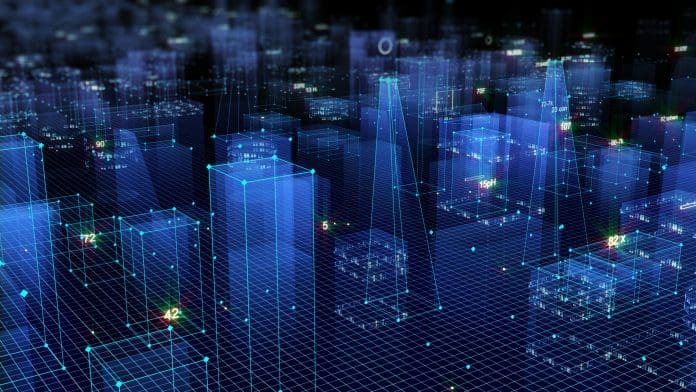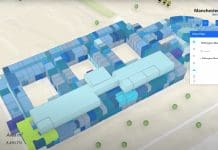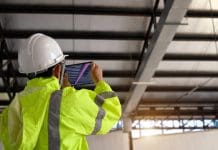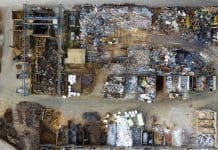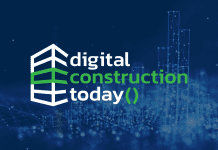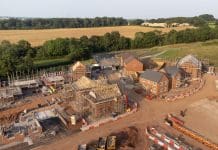Sam Norledge, head of smart buildings at LMG, a member of the Digital Buildings Council and buildingSMART UK & Ireland, looks at how we can break down silos with digital twins to unlock the wealth of insights hidden in building data
The thriving digital buildings industry promises a future of effective operations, increased sustainability and improved occupancy experiences. Despite advancements, a significant hurdle remains in managing building data.
Dr Bill East, director of the COBie Academy and founder of Prairie Sky Consulting, aptly highlighted this challenge by noting: “We’re collecting mountains of BIM data but too often, it’s just sitting there like an unopened treasure chest.”
This valuable treasure contains insights and optimisation possibilities that often go unnoticed due to the disconnect between design/construction information (referred to as the Asset Twin) and time operational data (referred to as the Performance Twin).
Explaining the digital twin: The Cybertruck analogy
Illustrating this concept through a comparison with Tesla’s Cybertruck can provide clarity.
Just like how purchasing a Cybertruck comes with a manual and specifications representing data similar to an Asset Twin in construction (eg BIM models and COBie outputs), Tesla also captures dynamic driving data corresponding to Performance Twin data – comparable to building automation systems (BAS) energy modelling and IoT systems.
A holistic digital twin seamlessly merges both elements for results.
Tesla utilises driver data to predict when batteries may require replacement, automatically placing orders for parts using predetermined information like part numbers.
This automated system aims to be user friendly and cost efficient. By merging real-time data for insights, the digital twin concept comes to life utilising all information to make well informed decisions at the opportune time.
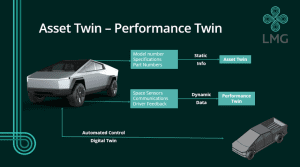
How does this apply to our field?
In examining the realm of architecture, engineering and construction (AEC), we unearthed that digital construction and operations often function in silos.
The Asset Twin, which is based on Building Information Modelling (BIM) and Industry Foundation Classes (IFC) stores design and construction details, offering a wealth of knowledge on a building’s aspects.
In contrast, the Performance Twin utilises Internet of Things (IoT) and Building Management System (BMS) data to monitor real-time building operations, shedding light on behaviours and occupant interactions within the building.
Although both twins hold value individually, their lack of integration is akin to leaving Dr East’s treasure chest unopened. The true return on investment for buildings lies in bridging this gap by connecting the Asset Twin with the Performance Twin to utilise the wealth of available data.
The Digital Building Council (DBC) is playing a role in facilitating connectivity through its BIM and ROI working groups, helping us uncover the key to unlocking valuable insights.
Maturity levels
One factor to consider is the maturity levels of digital twins. Dan Watson from HereWorks and James Thomas from SES Engineering and fellow DBC members emphasise varying degrees of maturity. They define it as follows:
- Passive Twin: Acting as an information repository during design and construction phases, a passive twin serves as a platform for managing specified assets and asset information. It enables teams to track, manage and record data related to the asset. However, its full potential is realised when integrated with operational data for time.
- Active Twin: The shift from passive to twin occurs when the digital platform connects with data from installed assets in the building. This integration facilitates real-time monitoring, analysis and comparison of performance, against design intent and commissioned data. An active twin empowers facility management teams to make decisions based on data, spot inefficiencies and optimise building performance over time.
Passive twins hold a treasure trove of operational insights while active twins bring these insights to life by turning data into intelligence that delivers real world benefits. Connecting these silos is where the real value lies.
Connecting the silos
IFCs and BuildingSMART data dictionaries serve as a link to bridge this gap. Treating IFC as a language facilitates communication and data sharing between Asset and Performance Twins, laying the groundwork for a comprehensive digital twin in the construction sector through data alignment within IFC.
This synchronisation is made possible through tools like IFCOpenShell and thorough mappings using established ontologies such as Brick Schema and Project Haystack.
Collaborative initiatives like the IoT Interoperability Project at buildingSMART UK & Ireland and DBC’s efforts are instrumental in advancing this cause, paving the way for unlocking possibilities.
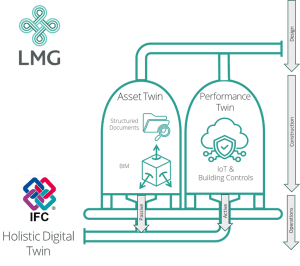
The success of this endeavour heavily relies on semantics: the language, connections and naming conventions that imbue data with significance. For AI systems to effectively process building data for insights, precise semantics are essential. Just as Andrew Ng likened AI to electricity in its potential, ensuring the proper infrastructure is in place is key for it to unleash its power.
IFC enables us to access the infrastructure needed to unlock BIM data and leverage AI capabilities to enhance building performance.
The future of buildings relies heavily on data-driven approaches, with IFC serving as the gateway to this future by tapping into the wealth of insights hidden within building data.
By emphasising data integration and collaboration through IFC, supported by entities like the DBC, we can foster an efficient and profitable built environment while gaining valuable insights and optimisations.
The potential return on investment extends across the building lifecycle – from design and construction to operation and maintenance. It’s crucial to dismantle barriers, establish connections and facilitate flowing data exchange to illuminate a path toward an innovative built environment. This is essential for unlocking the potential of buildings and reaping the benefits of digital transformation.


